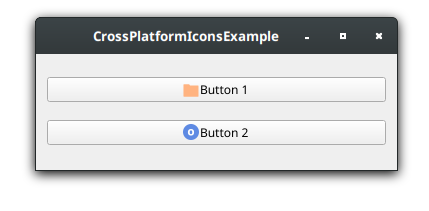

This enum type defines the shape of the tabs: Constant The tabs are drawn to the right of the pages. The tabs are drawn to the left of the pages. This enum type defines where QTabWidget draws the tab row: Constant

See also QTabBar, QStackedWidget, QToolBox, and Tab Dialog Example. Most of the functionality in QTabWidget is provided by a QTabBar (at the top, providing the tabs) and a QStackedWidget (most of the area, organizing the individual pages). An alternative is to use a QStackedWidget for which you provide some means of navigating between pages, for example, a QToolBar or a QListWidget.

Tab widgets can be a very good way to split up a complex dialog. Note that even if a tab is disabled, the page can still be visible, for example if all of the tabs happen to be disabled. If it is disabled, the tab is drawn in a different way and the user cannot select that tab. If a tab is enabled, the tab text is drawn normally and the user can select that tab. A tab and its associated page can be removed with removeTab().Įach tab is either enabled or disabled at any given time (see setTabEnabled()). You can change a tab's text and icon using setTabText() or setTabIcon().

Use setCurrentWidget() or setCurrentIndex() to show a particular page. You can retrieve a pointer to a page widget with a given index using widget(), and can find the index position of a widget with indexOf(). The current page index is available as currentIndex(), the current page widget with currentWidget(). The signal currentChanged() is emitted when the user selects a page. The position of the tabs is defined by tabPosition, their shape by tabShape.
Call addTab() or insertTab() to put the page widgets into the tab widget, giving each tab a suitable label with an optional keyboard shortcut. Insert child widgets into the page widget, using layouts to position them as normal. Create a QWidget for each of the pages in the tab dialog, but do not specify parent widgets for them. The normal way to use QTabWidget is to do the following: The user can show a different page by clicking on its tab or by pressing its Alt+ letter shortcut if it has one. Only the current page is shown in the page area all the other pages are hidden. Each tab is associated with a different widget (called a page). By default, the tab bar is shown above the page area, but different configurations are available (see TabPosition). InitStyleOption(QStyleOptionTabWidgetFrame * option) constĪ tab widget provides a tab bar (see QTabBar) and a "page area" that is used to display pages related to each tab. SetTabWhatsThis(int index, const QString & text) SetTabToolTip(int index, const QString & tip) SetTabText(int index, const QString & label) SetTabPosition(QTabWidget::TabPosition position) SetTabIcon(int index, const QIcon & icon) SetCornerWidget(QWidget * widget, Qt::Corner corner = Qt::TopRightCorner) InsertTab(int index, QWidget * page, const QIcon & icon, const QString & label) InsertTab(int index, QWidget * page, const QString & label) List of all members, including inherited membersĪddTab(QWidget * page, const QString & label)ĪddTab(QWidget * page, const QIcon & icon, const QString & label)ĬornerWidget(Qt::Corner corner = Qt::TopRightCorner) const. Qgroundcontrol github issues.The QTabWidget class provides a stack of tabbed widgets.







 0 kommentar(er)
0 kommentar(er)
